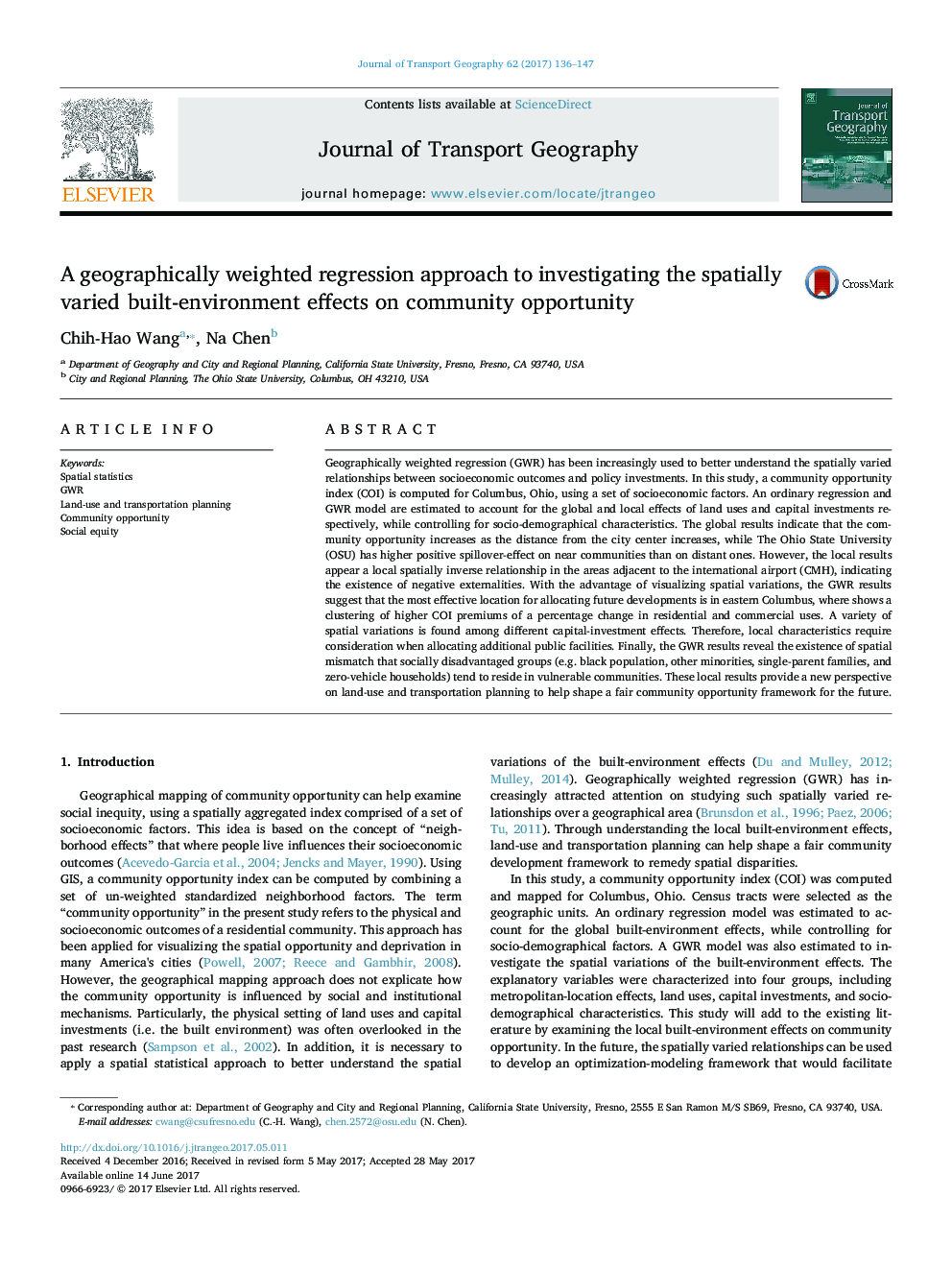| کد مقاله | کد نشریه | سال انتشار | مقاله انگلیسی | نسخه تمام متن |
|---|---|---|---|---|
| 5117530 | 1485405 | 2017 | 12 صفحه PDF | دانلود رایگان |
- A community opportunity index is computed and mapped for Columbus, Ohio, using a set of un-weighted socioeconomic factors.
- A GWR model is estimated to account for the local effects of land uses and capital investments.
- The analysis of marginal effects indicates that eastern Columbus is the best location for future developments.
- There is a variety of spatial variations among different capital-investment effects.
- The results show a spatial mismatch that socially disadvantaged groups tend to reside in vulnerable communities.
Geographically weighted regression (GWR) has been increasingly used to better understand the spatially varied relationships between socioeconomic outcomes and policy investments. In this study, a community opportunity index (COI) is computed for Columbus, Ohio, using a set of socioeconomic factors. An ordinary regression and GWR model are estimated to account for the global and local effects of land uses and capital investments respectively, while controlling for socio-demographical characteristics. The global results indicate that the community opportunity increases as the distance from the city center increases, while The Ohio State University (OSU) has higher positive spillover-effect on near communities than on distant ones. However, the local results appear a local spatially inverse relationship in the areas adjacent to the international airport (CMH), indicating the existence of negative externalities. With the advantage of visualizing spatial variations, the GWR results suggest that the most effective location for allocating future developments is in eastern Columbus, where shows a clustering of higher COI premiums of a percentage change in residential and commercial uses. A variety of spatial variations is found among different capital-investment effects. Therefore, local characteristics require consideration when allocating additional public facilities. Finally, the GWR results reveal the existence of spatial mismatch that socially disadvantaged groups (e.g. black population, other minorities, single-parent families, and zero-vehicle households) tend to reside in vulnerable communities. These local results provide a new perspective on land-use and transportation planning to help shape a fair community opportunity framework for the future.
Journal: Journal of Transport Geography - Volume 62, June 2017, Pages 136-147
